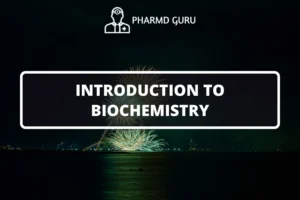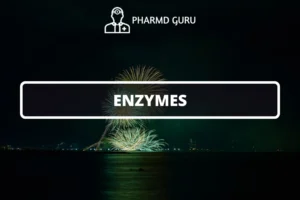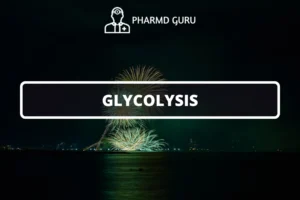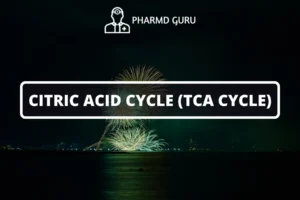Glycogenesis and glycogenolysis are two crucial processes involved in carbohydrate metabolism, specifically in the regulation of glucose levels in the body. Glycogenesis refers to the synthesis of glycogen, a branched polymer of glucose molecules, while glycogenolysis is the breakdown of glycogen into glucose. These processes are tightly regulated and play essential roles in energy storage and release. This article explores the processes of glycogenesis and glycogenolysis, their regulation, and their significance in carbohydrate metabolism.
SCROLL DOWN TO THE BOTTOM OF THE PAGE FOR ACTUAL NOTES
Table of Contents
- Introduction to Carbohydrate Metabolism
- Glycogenesis: Synthesis of Glycogen
- Glycogenolysis: Breakdown of Glycogen
- Regulation of Glycogenesis and Glycogenolysis
- Roles of Glycogenesis and Glycogenolysis in Carbohydrate Metabolism
1. Introduction to Carbohydrate Metabolism
Carbohydrate metabolism involves the breakdown and utilization of carbohydrates as a source of energy. Glucose is the primary carbohydrate used by cells for energy production, and its levels in the body need to be tightly regulated to meet the energy demands of various tissues.
2. Glycogenesis: Synthesis of Glycogen
Glycogenesis is the process by which glucose molecules are converted into glycogen for storage. It occurs mainly in the liver and skeletal muscle cells. The key enzyme involved in glycogenesis is glycogen synthase, which catalyzes the addition of glucose residues to the growing glycogen chain. Glycogenin, a self-glucosylating protein, serves as the primer for glycogen synthesis.
During glycogenesis, excess glucose is converted into glycogen and stored for future energy needs. This process is stimulated by insulin, a hormone released by the pancreas in response to high blood glucose levels. Insulin activates glycogen synthase, promoting the conversion of glucose to glycogen and facilitating glycogen storage in liver and muscle cells.
3. Glycogenolysis: Breakdown of Glycogen
Glycogenolysis is the breakdown of glycogen into glucose-1-phosphate, which can then be converted into glucose-6-phosphate and enter glycolysis for energy production. Glycogenolysis primarily occurs in the liver and muscle cells. The key enzyme responsible for glycogenolysis is glycogen phosphorylase, which cleaves glucose residues from the glycogen chain.
Glycogenolysis is regulated by various factors, including hormonal signals and energy demands. During times of low blood glucose levels, such as during fasting or exercise, glycogenolysis is stimulated to release glucose into the bloodstream. The hormone glucagon, released by the pancreas, activates glycogen phosphorylase, initiating glycogen breakdown and promoting glucose release from liver cells.
4. Regulation of Glycogenesis and Glycogenolysis
The processes of glycogenesis and glycogenolysis are tightly regulated to maintain glucose homeostasis. Hormonal signals, such as insulin and glucagon, play crucial roles in regulating these processes.
Insulin promotes glycogenesis by activating glycogen synthase, stimulating the conversion of glucose to glycogen for storage. Insulin also inhibits glycogenolysis by inhibiting glycogen phosphorylase, preventing the breakdown of glycogen into glucose.
Glucagon, on the other hand, stimulates glycogenolysis by activating glycogen phosphorylase, initiating the breakdown of glycogen into glucose. Glucagon also inhibits glycogenesis by inhibiting glycogen synthase, preventing the conversion of glucose to glycogen.
Additionally, other factors, such as intracellular signaling molecules and the energy status of the cell, also influence the regulation of glycogenesis and glycogenolysis.
5. Roles of Glycogenesis and Glycogenolysis in Carbohydrate Metabolism
Glycogenesis and glycogenolysis serve important roles in carbohydrate metabolism:
- Energy Storage: Glycogenesis allows excess glucose to be stored as glycogen in the liver and muscle cells. This stored glycogen can be broken down through glycogenolysis to release glucose and provide a quick source of energy during times of increased energy demand.
- Glucose Homeostasis: The interplay between glycogenesis and glycogenolysis helps maintain blood glucose levels within a narrow range. Glycogenolysis provides a means of releasing glucose into the bloodstream when blood glucose levels are low, while glycogenesis allows for glucose storage when blood glucose levels are high.
- Regulation of Blood Glucose: Hormonal regulation of glycogenesis and glycogenolysis, primarily by insulin and glucagon, ensures appropriate glucose utilization and prevents excessive fluctuations in blood glucose levels.
ACTUAL NOTES




